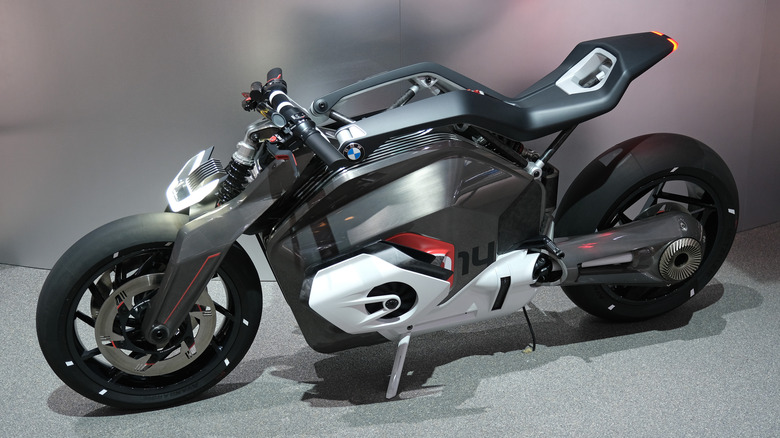How Many Volts Is A Motorcycle Battery And How Long Does It Take To Charge?
Motorcycles have occupied roadways around the world for a century, and it's not hard to figure out why. They're fast, they look cool, and they come in a variety of styles with loads of customization options. Additionally, they'll last you a while with proper care and upkeep, especially if you get one of the most reliable motorcycles ever built. Most run on gasoline, but keeping an eye on your fuel gauge isn't all you'll want to do when taking care of one. Among many other things, it's wise to learn about the ins and outs of motorcycle batteries as well.
When learning about motorcycle batteries, there are a handful of important details to know. First and foremost is the number of volts the average motorcycle battery has. A typical motorcycle battery is advertised at a nominal voltage of 12 volts, though bikes out there run on 6-volt electrics and, therefore, 6-volt batteries. Most motorcycles will register within the 12.6 to 12.7 volt range. This has to do with the setup of the battery itself and the number of voltage cells within. Overall, voltage readings on a motorcycle battery can range from 10 to 14 volts, with 10 indicating a needed charge and 14 indicating a charge over 90%.
With this voltage information covered, it's worth looking over how to charge a motorcycle battery and how long it should take.
Charging a motorcycle battery can take a while
There are several noticeable signs to look out for regarding the declining voltage of your motorcycle battery. Dim lights, hesitation to start, and a weak horn are just some of the potential hints indicating that your motorcycle battery is lacking voltage. If it's completely dead, the engine won't turn over at all. You could bumpstart or jumpstart your motorcycle to get it going, or you could go the charger route. and Assuming your battery is in good shape and doesn't need to be completely replaced for corroded terminals or battery case bulging, then a simple charge should fix it right up.
Once you determine which type of motorcycle battery you have between lead acid, lithium-ion, and AGM, you can purchase the correct charger type. Once you've gotten one of the multiple tools every motorcycle owner should have in their garage, safely remove the battery from the bike, attach the charger's positive and negative clamps to the positive and negative battery terminals, plug the charger in, and turn it on. A typical lead acid battery can take between six and 24 hours to fully charge, depending on factors like how depleted your battery is, the battery's age, and which type of battery you have.
Though it can take some time to charge up, taking good care of your motorcycle's battery goes a long way in increasing your ride's lifespan. So long as you're mindful of its age, voltage, and ability to hold a charge, your bike should be just fine.

